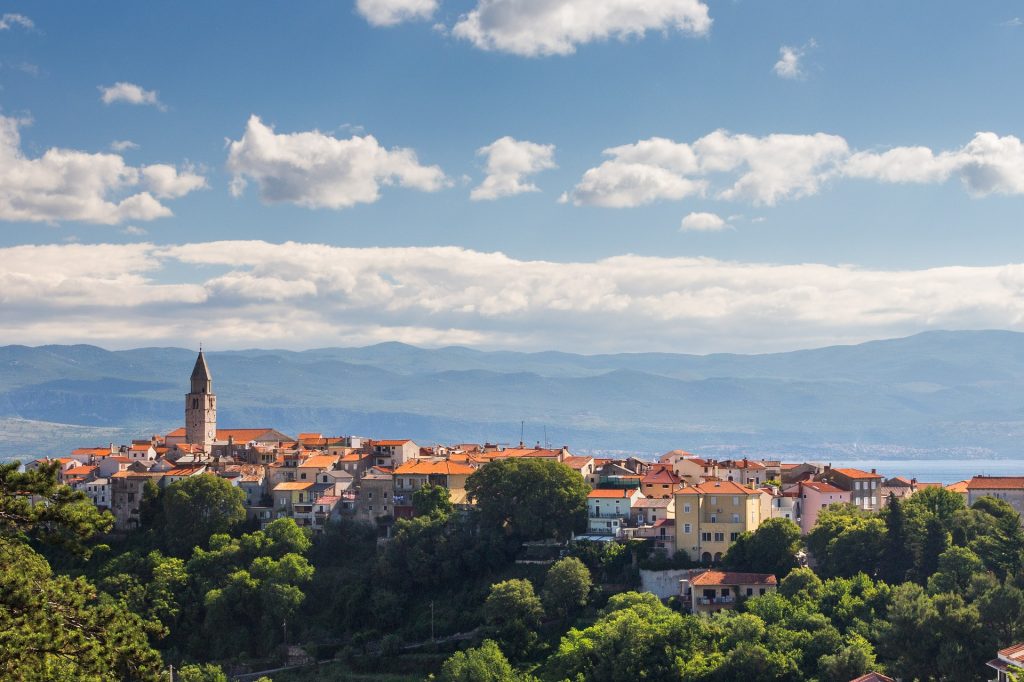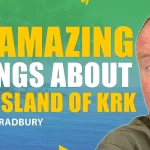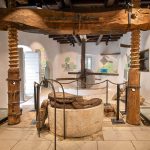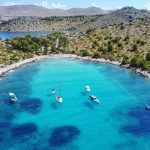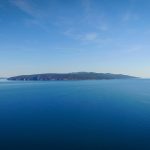Let’s try something. Go ahead and think of a Croatian island other than Hvar. Or Brac. Or Korčula. Or Vis. Or Pag. Or Mljet. Or Dugi Otok. Or Lopud. Or Lastovo. Remember, there are more than 1000 islands in Croatia! This is in no way a criticism. These islands are positioned better than any other and for the fairest reasons. The reputation of its beaches, nightlife, traditions, heritage, and more precedes them. The marine traffic in the Dalmatian islands is impressive, and it is understandable. However, some paradises on the northern Adriatic sea have little or nothing to envy the Dalmatian ones.
One of them is the island of Krk, located in the center of the Kvarner Bay and belongs to the Primorje-Gorski Kotar county. Krk has an area of 405.80 km2 and a population of almost 20,000 inhabitants and is the second-largest island in Croatia. Known as the ”Golden Island”, Krk is perhaps the most accessible island in the country. Why? For starters, Krk is connected by a bridge to the mainland, which allows residents and visitors to get around by car and bus very easily. In addition, Rijeka airport is located precisely on the island of Krk, so if you have booked an island accommodation and arrive by international flight, you will not have to worry much about how to get to your destination.
If the island of Krk is your choice as your next travel destination, you will enjoy a place that boasts an enormous history as it is home to the largest heritage of Glagolitic writing in the country, premium wines and olives, one of the most important pilgrimage routes in the world, Camino Krk; as well as being recognized as a health tourism destination, due to its impeccable air.
Although the island of Krk deserves to be recognized as a spectacular whole, in this article we share a little detail about the destinations that you can visit on the island.
Omišalj
Omišalj is a historic town located on the north-western part of the island of Krk and situated at 85 meters above sea level. Omišalj’s privileged position seems to have attracted not only modern humans but also prehistoric inhabitants, which explains why Omišalj has existed for more than 10,000 years. Omišalj is one of the oldest towns on the island and today it is an important glagolitic and cultural center. Learn more about Omišalj HERE.
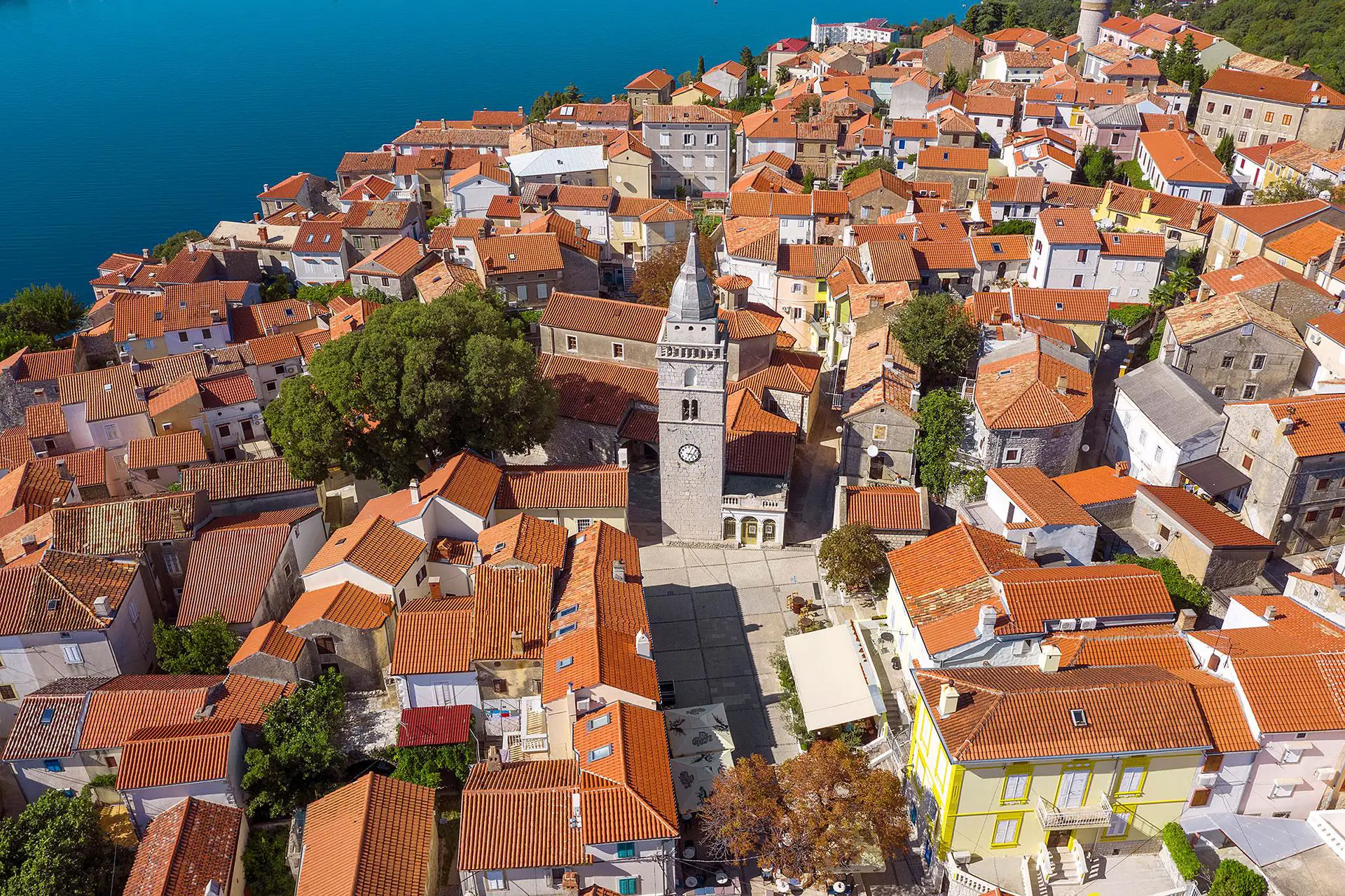
Image: Krk Island Tourist Board
Njivice
Njivice is located very close to Omišalj and belongs to the Municipality of Omišalj. Also with a rich history, Njivice has been inhabited mainly by fishermen, olive groves workers, and cattle-breeders. Njivice has always stood out for its picturesque houses along the shore and the fishermen’s boats and nets, creating a typical postcard of the place. Njivice today has modern and high-quality accommodation, including hotels and camping sites. Learn more about Njivice HERE.
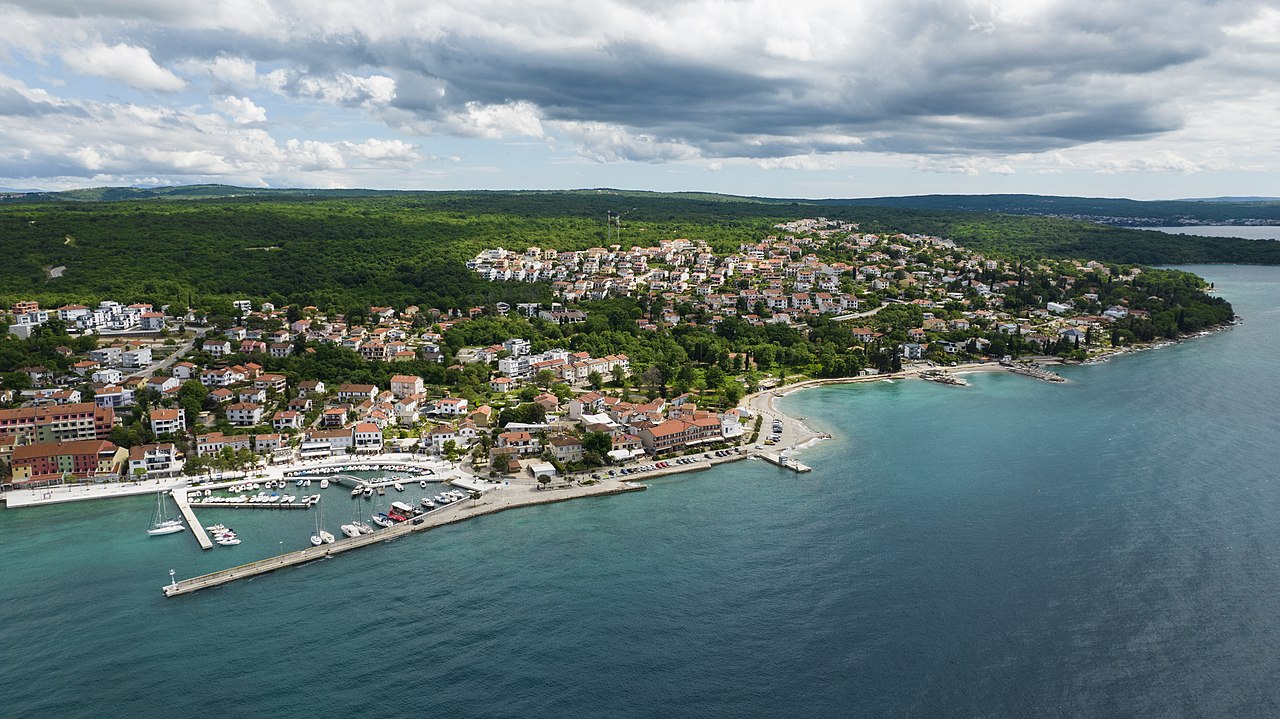
Image: Arne Müseler/Wikimedia Commons
Malinska
Malinska is one of the most popular destinations on the island of Krk, and in addition to its excellent beaches and accommodation options, it has an important marine heritage. Malinska, surrounded by forests, was once a timber export port and a favorite destination for the Viennese aristocracy. Due to its position, Malinska was also an anchor point for many ships to protect themselves from strong winds and tides. Today Malinska has a new and modern interpretation center, and the old shipyard is still operating on the same site. Learn more about Malinska HERE.
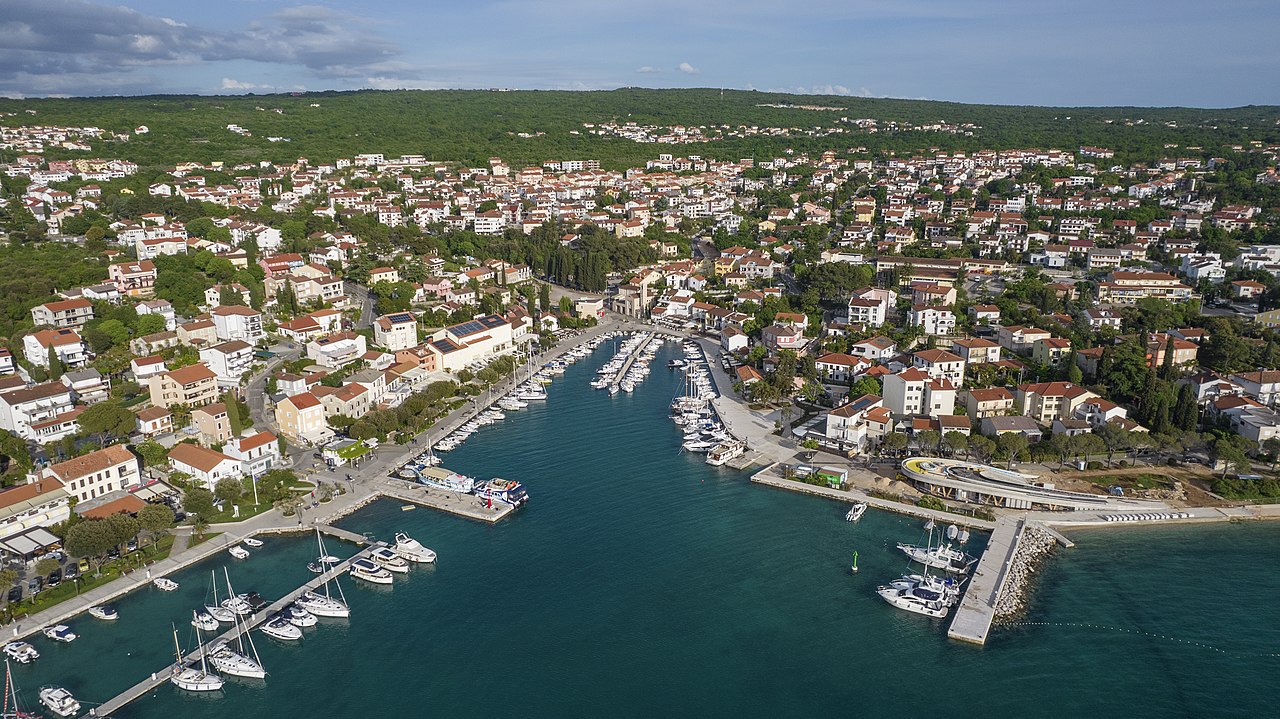
Image: Arne Müseler/Wikimedia Commons
Krk Town
The town of Krk is the administrative, political, economic, and religious center of the island of Krk. It is the town with the most inhabitants on the island, with a population of approximately 7,000 inhabitants. It is worth mentioning that the town of Krk was mentioned by the famous Greek writer Homer in a poem under the name of Koureto. Undoubtedly, the highlight of Krk is its impressive cathedral complex, built in the 5th century. Learn more about the town of Krk HERE.
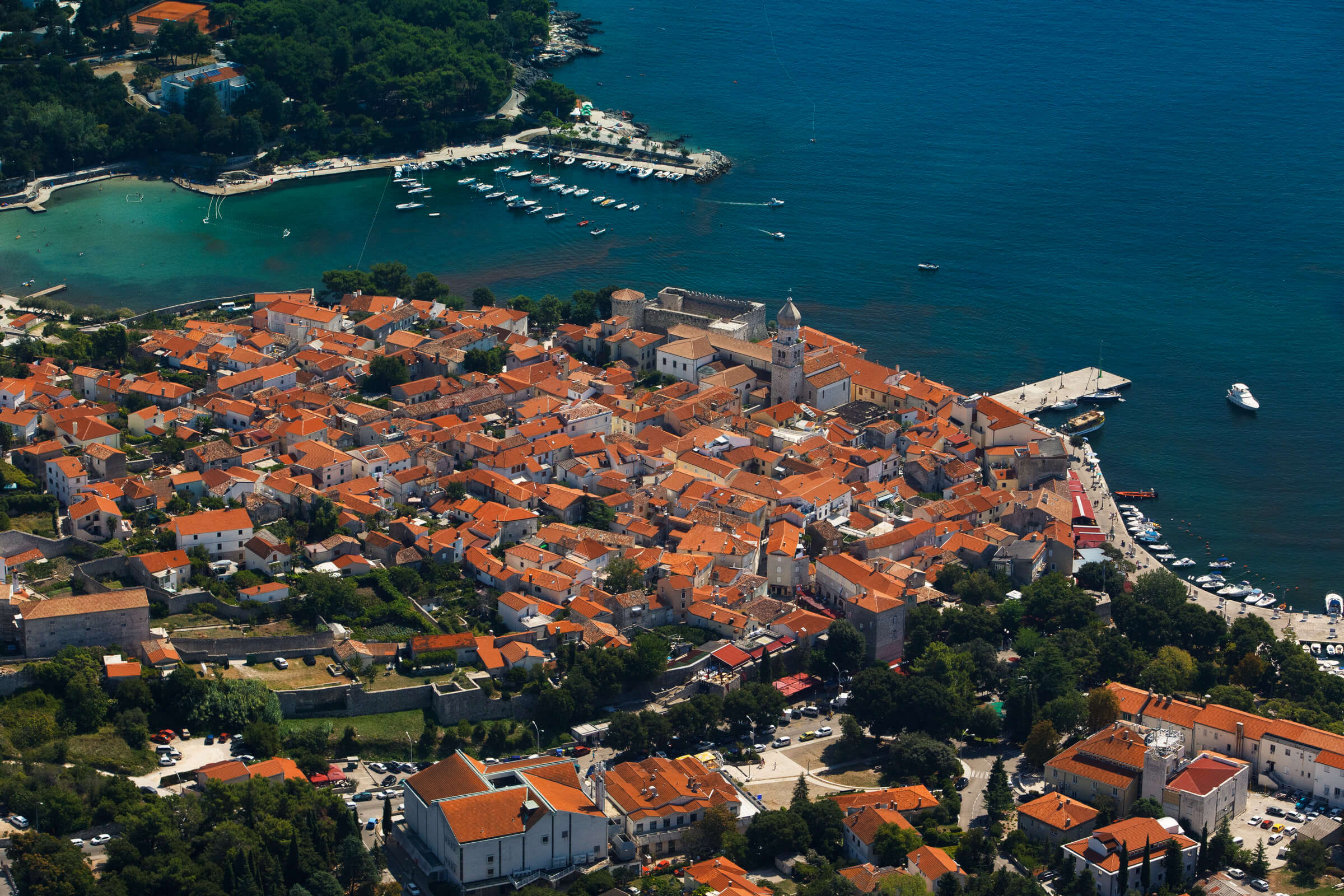
Photo: Mario Romulić
Punat
Punat is located on the east coast of the island of Krk and is considered one of its most popular destinations. Despite being considered the most recent town on the island, Punat also boasts a lot of history, culture, and heritage. There you will find not only one of the most modern nautical and marina centers in the entire country, but Punat is also the main olive-growing center on the island. When speaking of Punat, it is always necessary to refer to the small island of Košljun, where a Franciscan monastery is located. Learn more about Punat HERE.
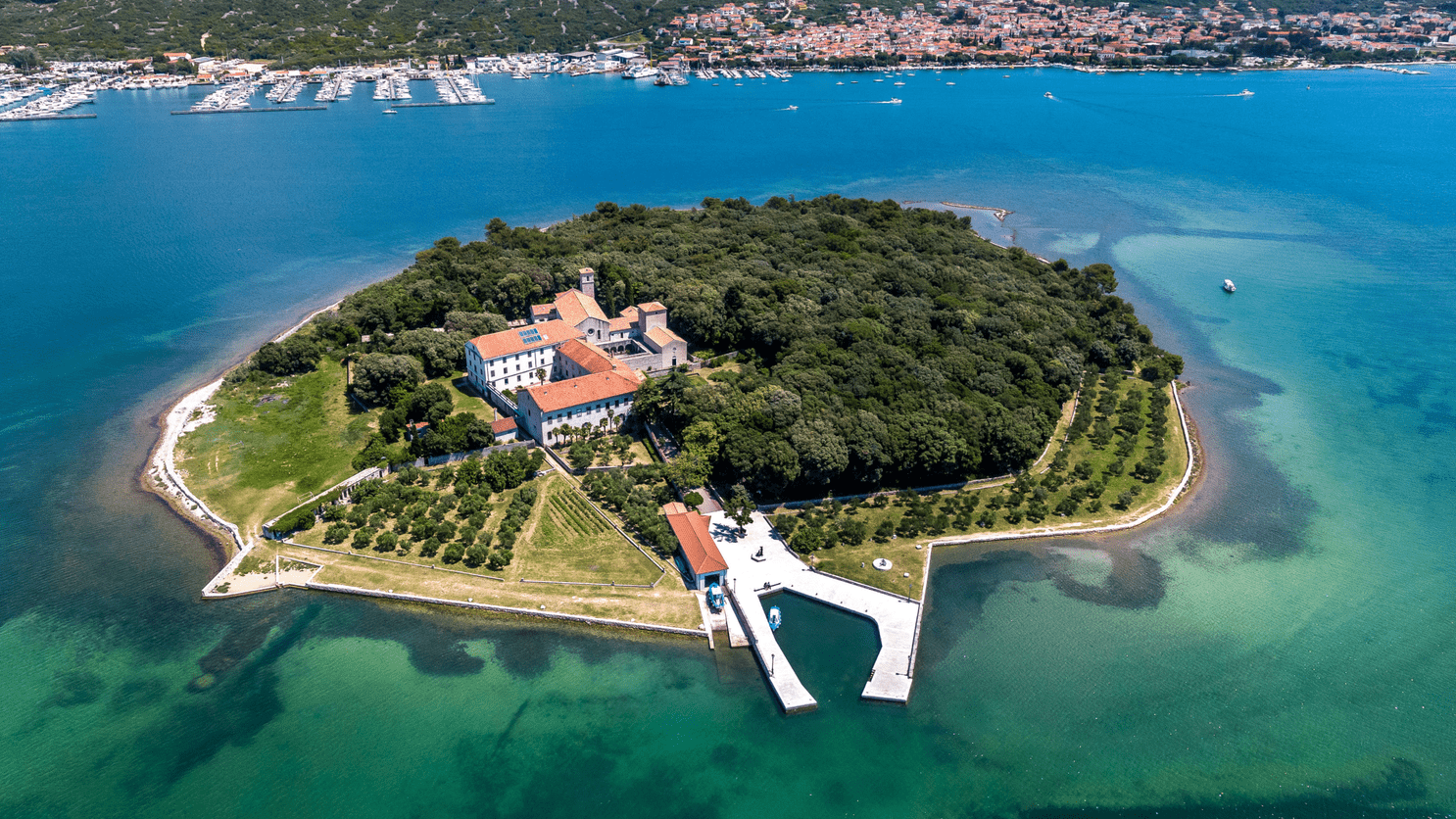
Image: Krk Island Tourist Board
Baška
Baška is located at the southern tip of the island of Krk, and is definitely one of the most prominent destinations. No matter what angle you see it from, the beauty of Baška is undeniable. In addition to its spectacular and extensive beach, Baška also stands out for the architecture in its old town, as well as its various cultural and historical monuments. Baška can boast of being a very important part of Croatian history, as it is there that the Baška tablet was found, one of the first monuments containing an inscription in the Croatian recension of the Church Slavonic language, dating from c. 1100 AD, thus being one of the most important elements of the Glagolitic script. Learn more about Baška HERE.
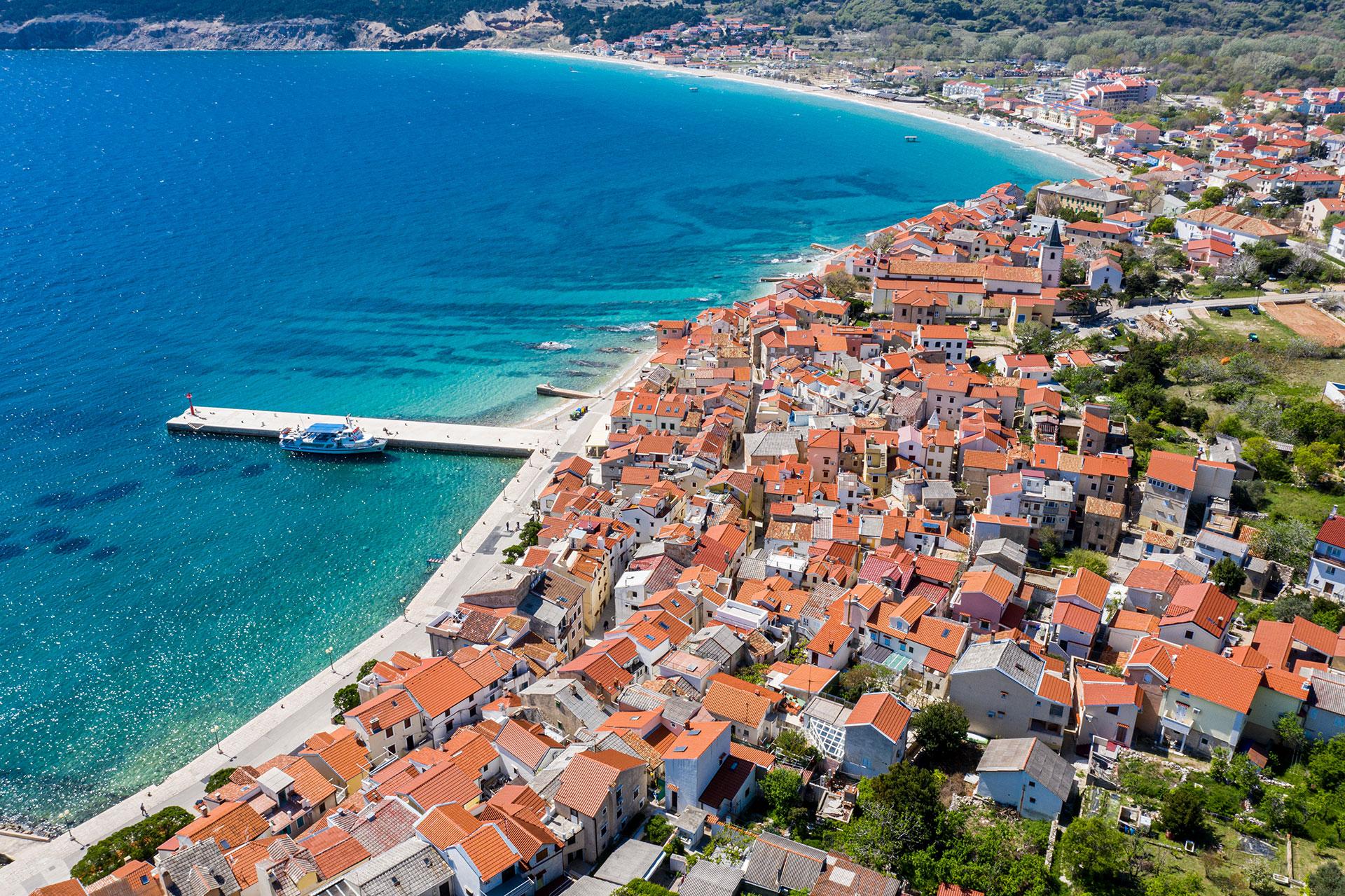
Image: Krk Island Tourist Board
Vrbnik
Vrbnik is indisputably one of the most famous settlements not only on the island of Krk but in all of Croatia. Vrbnik is well known for its Glagolitic heritage and especially for its delicious wines, and in particular is its golden-yellow wine – the Žlahtina, with a great national and international reputation. It’s not the only old town on the island of Krk that sits on top of a hill, but Vrbnik sits on a large cliff by the sea, giving it a wonderful view into the distance. Learn more about Vrbnik HERE.
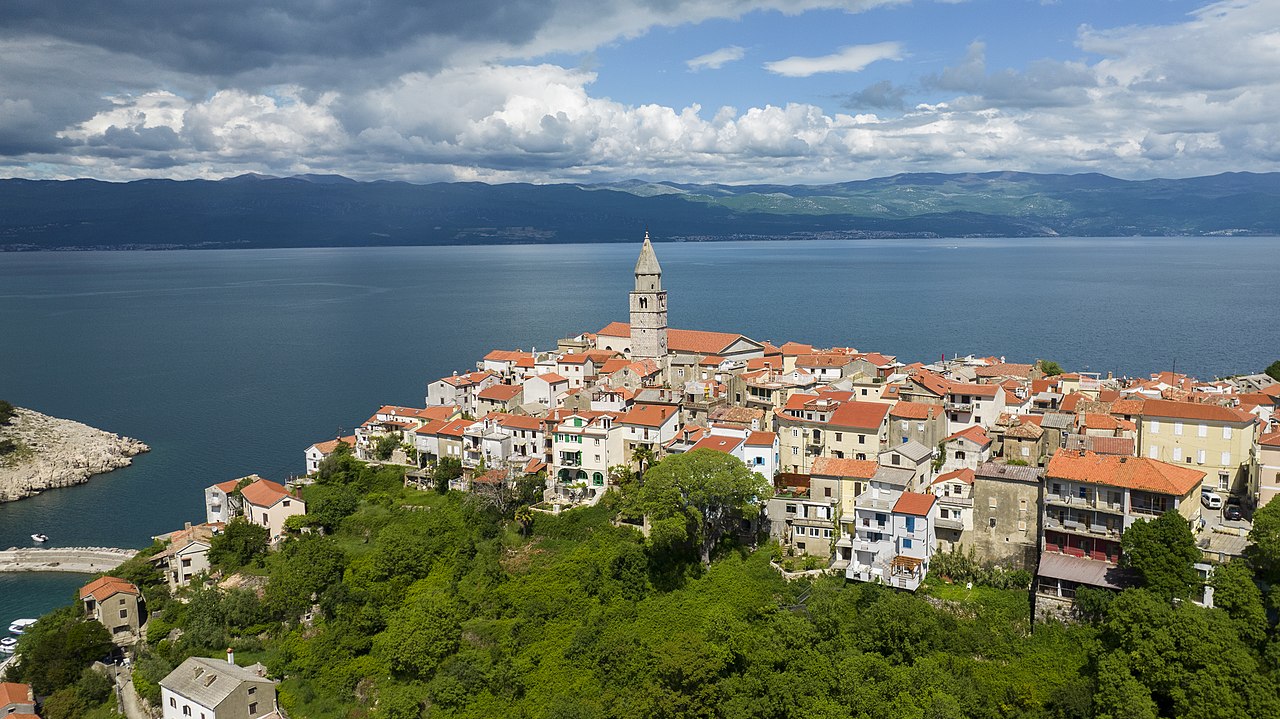
Image: Arne Müseler/Wikimedia Commons
Dobrinj
Dobrinj is located in the upper part of the island of Krk, to the east. Dobrinj includes other places of interest such as Šilo or Klimno, but surely the first thing one should do is visit the main town, which stands on a 200-meter-high hill. Dobrinj is very reminiscent of the settlements one can find in central Istria, also on hills. A beautiful destination without a doubt, surrounded by thick forests and with a great Glagolitic heritage. Likewise, many other important traditions stand out, such as its folkloric events, its typical costumes, its school of wind instruments, and its home cuisine. Learn more about Dobrinj HERE.
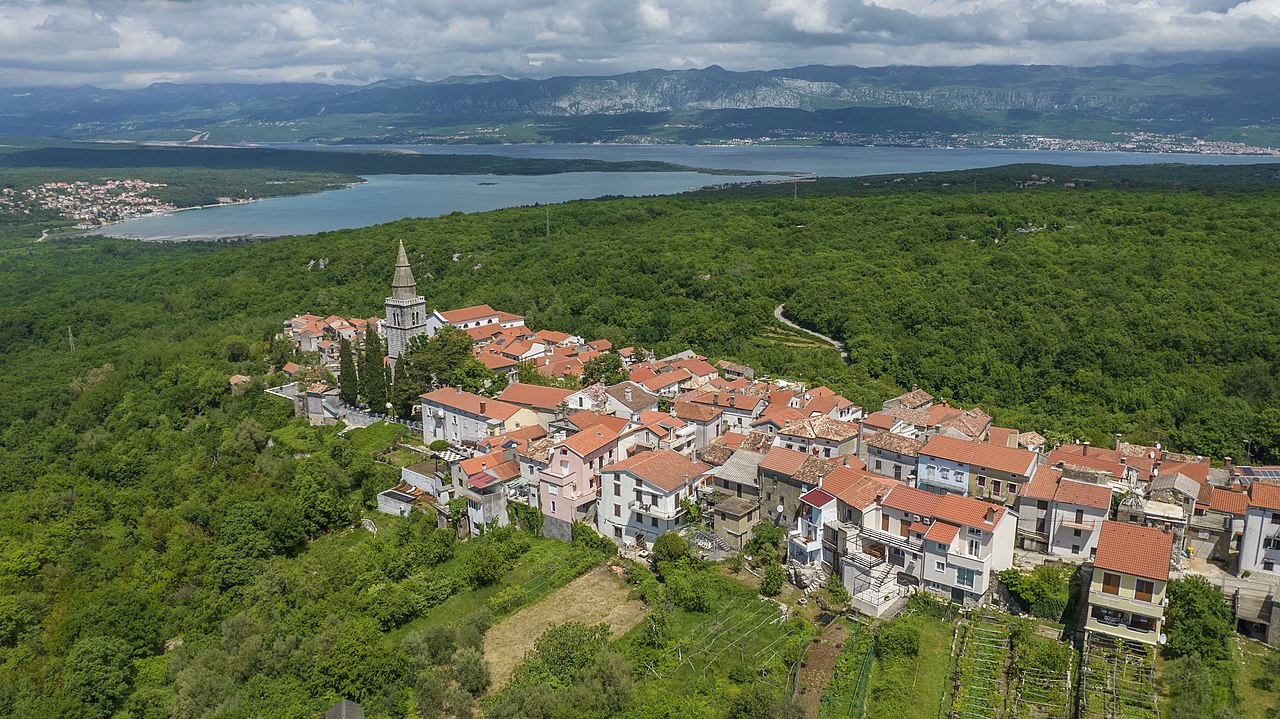
Image: Arne Müseler/Wikimedia Commons
For more on travel in Croatia, follow TCN’s dedicated page.

